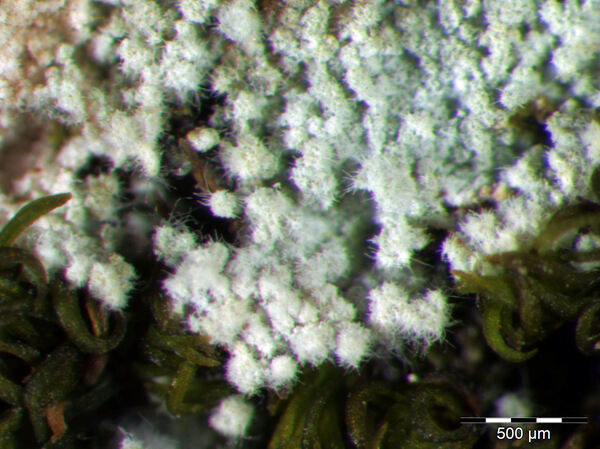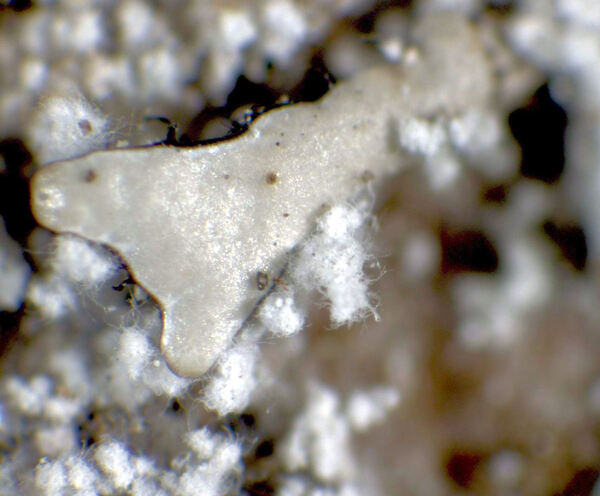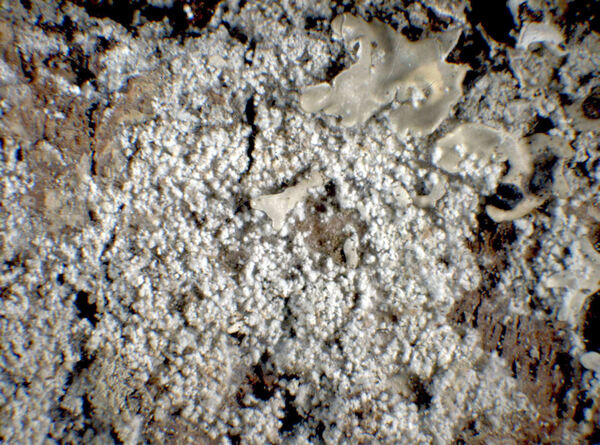Lepraria rigidula (B. de Lesd.) Tønsberg
Sommerfeltia, 14: 205, 1992. Basionym: Crocynia rigidula B. de Lesd. in Hue - Bull. Soc. Bot. France, 71: 331-332, 1924.
Synonyms:
Distribution: N - VG (Baruffo & al. 2006), Frl (Baruffo & al. 2006), TAA (Baruffo & al. 2006, Nascimbene & al. 2009, 2010, 2014, 2022, Nascimbene 2014, Nascimbene & Marini 2015, Nimis & al. 2015, Trindade & al. 2021), Lomb (Baruffo & al. 2006, Brackel 2013), Piem (Baruffo & al. 2006, Isocrono & al. 2006), Emil (Baruffo & al. 2006, Fariselli & al. 2020), Lig (Baruffo & al. 2006). C - Tosc (Baruffo & al. 2006, Benesperi & al. 2007, Brackel 2015), Umb (Baruffo & al. 2006, Panfili 2007), Laz (Baruffo & al. 2006), Abr (Nimis & Tretiach 1999), Mol (Baruffo & al. 2006, Caporale & al. 2008, Brackel 2020), Sar (Kümmerling & al. 1995, Zedda 2000a, 2002, Zedda & al. 2001, Baruffo & al. 2006). S - Bas (Baruffo & al. 2006, Brackel 2011), Cal (Baruffo & al. 2006), Si (Baruffo & al. 2006, Puglisi & Cataldo 2019).
Description: Thallus leprose, cottony, whitish to pale grey, not sharply delimited, forming a soft, thick, more or less continuous, irregularly spreading crust, not lobed or obscurely lobed in young thalli, covered in up to 60 µm wide, coarse, soredia-like granules which are often clustered into up to 300 µm wide aggregates, with long (60-120 µm), conspicuous projecting hyphae which are visible with a hand-lens. Medulla absent or very poorly developed. Photobiont chlorococcoid, the cells up to 20 µm diam. Spot tests: K+ yellow, C , KC+ pale yellow, P- or P+ pale yellow, UV , or UV+ dull pink. Chemistry: atranorin and nephrosteranic acid.Note: an ecologically wide-ranging species occurring on a wide variety of substrata (mainly acid bark, but also siliceous rocks, soil and mosses), both on rain-sheltered and rain-exposed sites, with optimum below the subalpine belt, certainly more common, also in the Alps, and to be looked for there.
Growth form: Leprose
Photobiont: green algae other than Trentepohlia
Reproductive strategy: mainly asexual, by soredia, or soredia-like structures (e.g. blastidia)
In underhangs rarely wetted by rain
Commonnes-rarity: (info)
Alpine belt: extremely rare
Subalpine belt: very rare
Oromediterranean belt: absent
Montane belt: rather rare
Submediterranean belt: common
Padanian area: rather rare
Humid submediterranean belt: common
Humid mediterranean belt: absent
Dry mediterranean belt: absent

Predictive model
Herbarium samples
Growth form: Leprose
Photobiont: green algae other than Trentepohlia
Reproductive strategy: mainly asexual, by soredia, or soredia-like structures (e.g. blastidia)
In underhangs rarely wetted by rain
Commonnes-rarity: (info)
Alpine belt: extremely rare
Subalpine belt: very rare
Oromediterranean belt: absent
Montane belt: rather rare
Submediterranean belt: common
Padanian area: rather rare
Humid submediterranean belt: common
Humid mediterranean belt: absent
Dry mediterranean belt: absent

Predictive model
| Herbarium samples |
 Index Fungorum
Index Fungorum
 GBIF
GBIF






